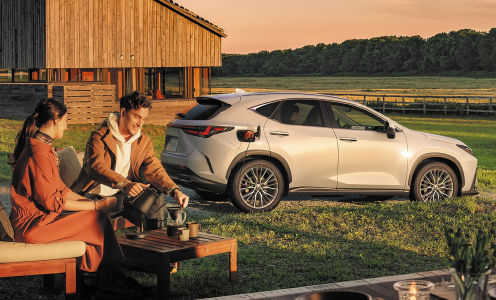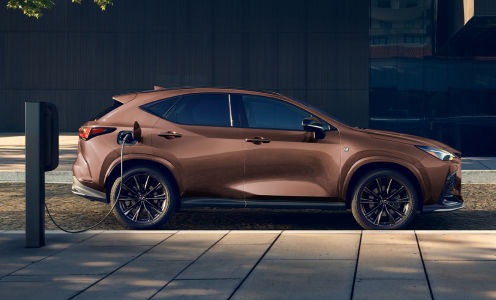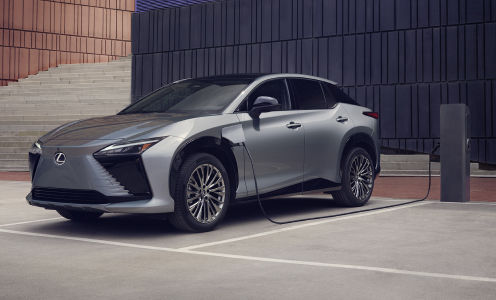Select a province & language
Entrance to this website assumes you have read and agree to these Legal Terms and Conditions and the privacy policy.
Entrance to this website assumes you have read and agree to these Legal Terms and Conditions and the privacy policy.

When it’s time to recharge, simply plug in – at home, at work, or at any public charging station. The time it takes depends on the size of the battery and the speed and level of charging point you’re using.
Ready to experience the potential of an electrified vehicle? Explore the electrifying line up of powerful Lexus Plug-in and Battery Electric Vehicles.

120-VOLT AC OUTLET
A great pick for drivers with short commutes. Under ideal conditions (external air temperature of 25 degrees Celsius), you can go from 10% (Low Battery Light) to 100% (fully charged) in about 50 hours.*

240-VOLT AC OUTLET
The best setup for faster charging at home. Under ideal conditions (external air temperature of 25 degrees Celsius) you can go from 10% (Low Battery Light) to 100% (fully charged) in about 9.5 hours.* Can be installed at home by a licensed electrician. You can also find Level 2 chargers at public charging stations.

480-VOLT DC FAST CHARGING
Under ideal conditions (external air temperature of 25 degrees Celsius with 150kW or above Level 3 DC Fast Charger), you can charge from 10 % (Low Battery Light) to 80% in as quickly as 30 minutes (AWD) although a number of variables will result in significantly longer charge times.* Level 3 DC Fast Charging currently only available at public charging stations.
For the convenience of charging at home, a licensed electrician can install Level 2 Home Chargers. They use a 240-volt outlet just like a stove, or HVAC equipment.
Your certified installer will take you through the things to consider before you install one. For example, the best location, the type of connector, the length of cord, permanent or portable installation, the right plug head and amperage, as well as installation costs. And be sure to check if there are any government rebates in your area for the installation4 of a home charger.

Canada has more than 5,000 public charging stations. Most are Level 2 however, there is a growing network of Level 3 fast chargers. The Transport Canada website makes it easy to locate a charger near you.
Charging at home is simple and convenient. So set a charging schedule that suits your routine and takes advantage of off-peak electricity costs.
Charge time depends on many things, firstly, the amount in your vehicle when you plug it in.
Another key factor that affects charging is weather. As the temperature approaches freezing and below, we strongly recommend AC charging. DC Fast Charging times will increase as the temperature drops. For example, at -10 degrees Celsius, DC Fast Charging times can increase by approximately five times. As temperatures drop even further, DC Fast Charging may be considerably longer or not possible. In order to ensure effective charging and preserve battery health over the life of the vehicle DC Fast Charging should be limited to two sessions per day year-round.
Lexus BEVs and PHEVs come standard with a level 1 charging cable that can be plugged into any 120V household outlet.
Level 2 charging at home requires the purchase of a charger and the associated installation1 costs. Please contact a certified installer about requirements, including the right plug head, and costs. Federal and Provincial charger rebates may be applicable.
1 To reduce risk of fire, injury, or property damage, only (i) purchase/install a safety certified EV charger with voltage/current that are vehicle compatible (ii) use a licensed insured electrical professional to install charger (iii) install and operate in accordance with charger manufacturer's instructions/warnings and applicable laws.
Learn About Federal Rebates for Home Chargers
Learn About the ChargePoint Level 2 Home Charger
The Transport Canada website makes it easy to locate a charger near you.
Find The Charger Closest To You
To get the most out of your driving range and to avoid range anxiety, make charging a regular habit by setting a charging schedule using the vehicle’s Charge Management System.